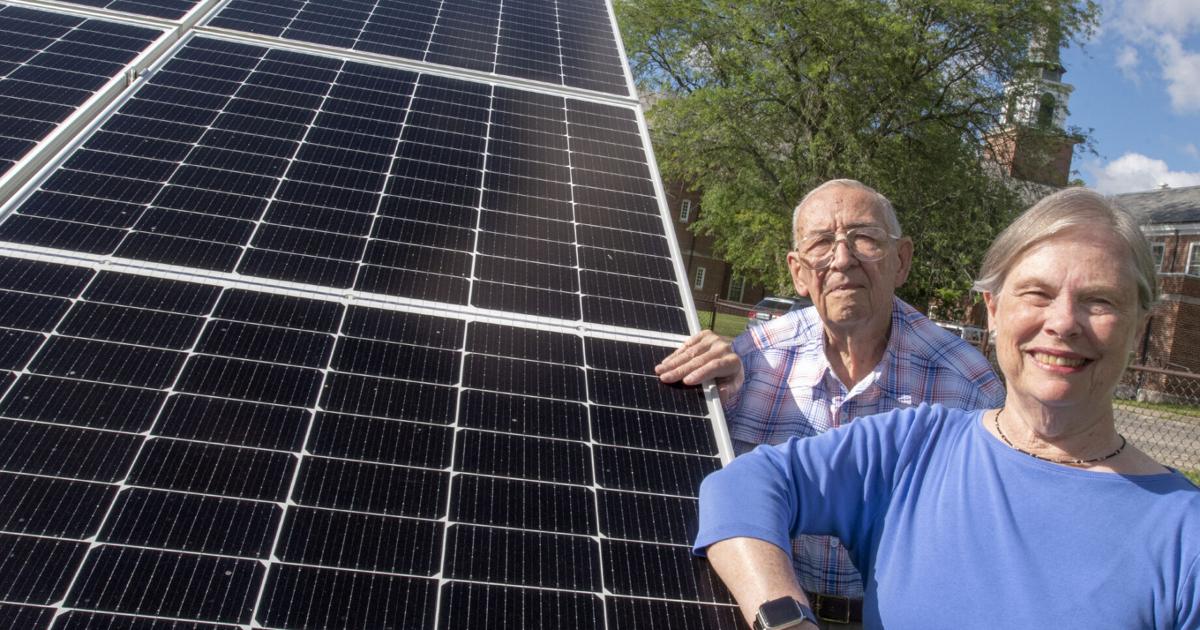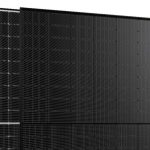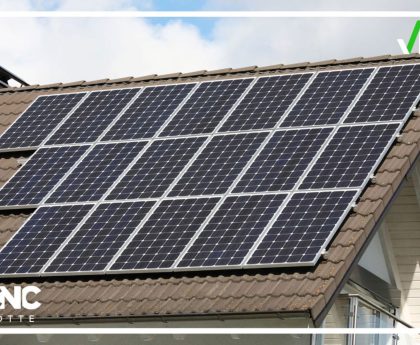CHAMPAIGN — The large solar array seemed to appear overnight in back of St. Peter’s United Church of Christ.
But it was a result of years of planning and communication with the neighborhood.
“It’s a pretty big array, and it’s pretty close to our neighbors in the back, so I was a little concerned early on if they would be OK with this,” said Chris Todd, Geo-Solar project coordinator.
Originally, church members assumed the solar array would be built on the roof of St. Peter’s like similar arrays at many private residences.
The slanted slate roof, however, meant that wasn’t possible.
“I don’t know how I would feel about having a solar array in my backyard, or looking out my backyard at it,” Todd said.
During early stages of planning the solar array, a church member sent an email to neighbors who they had contact information for, asking them to reach out with concerns about the project.
Nobody called back.
Later, when plans were nearly completed, Todd sent a letter explaining what the church was up to and inviting neighbors to a discussion meeting.
Nobody came.
The team never received any negative input, but over time, people in the neighborhood began expressing they were happy the church was pursuing a more eco-friendly energy source.
“Some of our neighbors have solar on their roof, so obviously they’re supportive of renewable energy,” Todd said.
Renewable energy was certainly one reason for installing the solar array, as caring for the earth and being of service to their neighbors are two parts of the church’s mission.
It will also go a long way toward balancing the budget at St. Peter’s.
Nick Voss, church treasurer, was already on board with the project.
His only complaint about the solar panels on his own roof is that he should have gotten more.
He didn’t have to do a lot of math to see that a solar array could be good for the church, either.
“That electric cost should be 100 percent defrayed,” Voss said.
The church’s current yearly utility cost is about $20,000, so cutting out the $12,000 in electric bills makes a huge difference.
Excess energy generated by the array also goes back into the grid.
“If we overproduce, everybody benefits,” Voss said.
The solar array, while definitely more visible, is really only half the story of the work at St. Peter’s.
Until recently, the church relied on a large boiler for heat and didn’t have central air conditioning in a lot of the building.
Now, a geothermal heating and cooling system will regulate temperature throughout the building.
“We wanted to make our building more inviting, we wanted to care for the earth, and we wanted to lower utility costs,” Todd said.
With a cooler, more comfortable building, church members hope to hold more summer events and look forward to a more enjoyable experience with pre-existing programs like the Summer Musical Theatre Program.
Overall, the cost to install a geothermal system was a bit more expensive than installing a more traditional HVAC system, but St. Peter’s chose to go for the more environmentally friendly option, especially with incoming savings from the solar array.
This was all still a very expensive project.
With a congregation of just under 100 people, the church needed to come up with $510,000.
Federal, state and local incentives cut the total cost to $296,032.
An environmental justice nonprofit organization called Faith in Place helped church members with the project and donated $10,000.
A capital campaign within the church returned more than expected, covering $155,800.
That leaves St. Peter’s with a 12-year plan to pay off the remaining $130,232 — less than the savings expected as a result of the solar-geothermal project.
This post was originally published on 3rd party site mentioned in the title of this site






